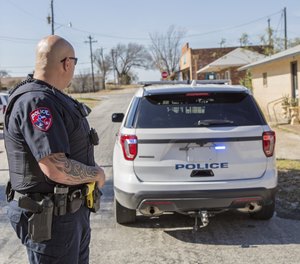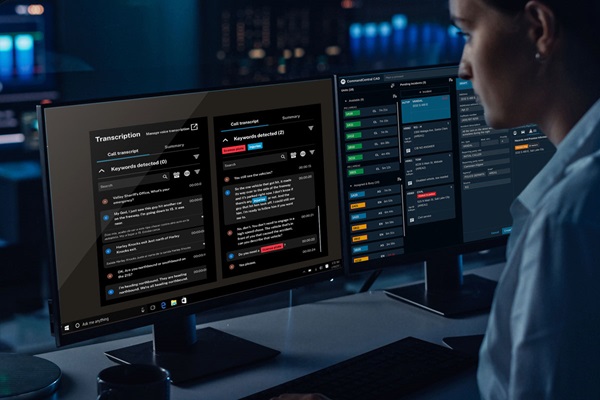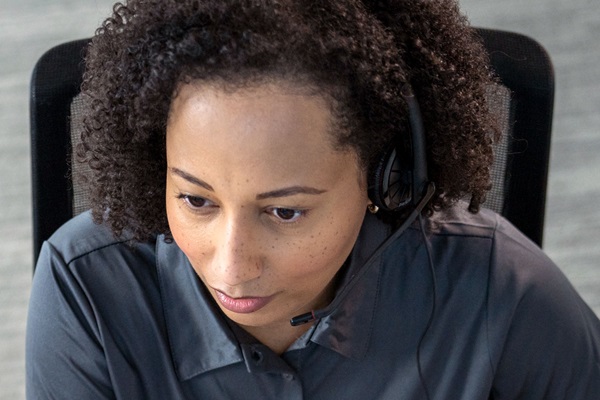The days of dispatchers writing incident details on 5×8 cards and time stamping them with each significant development are mostly behind us, as just about everyone uses some form of computer-aided dispatch (CAD) software. The process is further streamlined with officers having critical operational data immediately available to them via their MDTs or handheld devices. Here are some of the ways this technology can be leveraged to decrease response times and improve police service.
Premise history
A CAD system can maintain details of each address in the service area, information that will pop up when a call at or near that address is entered into the system. These details can be everything from residence addresses of agency employees to histories about people at those addresses who are hostile to police.

Virtually all public safety agencies use CAD systems, but they don’t always leverage them for maximum efficiency. (Photo/PoliceOne)
Properly updated, these premise history entries can make for smoother responses to incidents. If Officer A had responded to Address X a few days before, he might have some insight to what is going on there, or be able to provide officer safety information to those heading there on a new call. Access codes for the keypads of gated communities are good information for premise history entries.
Both officers and dispatchers should be encouraged to add as much detail as they can to premise history files, so that everyone can get the benefit of their shared experience.
Text updates
Low-priority calls, such as the assignment of cold reports and questions citizens have for officers, can be assigned over the MDT to keep the voice channel available for higher priority traffic. The more critical dispatches are sent to the MDTs, but are also broadcast on the voice channel to maintain everyone’s situational awareness.
Updates to these calls may also be best disseminated over the MDT, rather than by voice. Officers who are adding themselves to the units responding and information coming in from the reporting person can be sent as text updates. Responding officers can see this as they make their way to the call, and keep the channel open for emergency voice traffic. The dispatcher might use some version of voice shorthand (e.g., “Call updated”) to advise responding units of an update, so they will know to glance at their screens and get the new details before they exit their cars. Officers should verbally acknowledge these updates (e.g. “On scene, updates noted”) when they arrive on scene, so the dispatcher will know they have all the current details.
This utility becomes less useful once officers have arrived on scene and are no longer in front of their MDTs. Once the first officers are at the scene and out of the car, any new information should be transmitted over the voice channel, so that everyone will get it. Knowing when to switch from text to voice updates requires situational awareness from the dispatcher. The dispatcher has to be cognizant that the officers are on foot and using their eyes and ears to assess the environment.
Pending calls
Some agencies do not permit patrol units to view the list of pending calls from their MDTs. This is often a sign of low morale or poor officer-supervisor relationships, especially when the rationale is that officers will avoid calls that hold the potential for paperwork or some other less pleasant duty. In more efficient agencies, officers finish details as quickly as they can and then “buy” pending calls before they are assigned to them by the dispatcher. This allows officers to choose calls they can get to fastest, or that make the best use of their individual talents.
If the agency does not permit patrol officers to see pending calls from their MDTs and self-dispatch to them, it may be indicative of a problem deeper than just lack of initiative. Professional, highly-motivated officers want to work and take care of the assignments that come in. If this isn’t the case, top management needs to ask why their officers are not more driven to get the work done.
Alternative communication conduits
As text messaging has become a preferred method of communication over voice calls, the public has asked for a way of contacting emergency services via text, rather than voice. This medium is less than ideal for emergency service use, as it requires having sufficient staff to constantly monitor and respond to incoming messages. There is also greater potential for pranking, as the added anonymity of the text message can make people more bold and reckless.
Still, there are situations where text messaging has advantages over voice, especially if there is a way for those messages to go directly to field units deployed on the incident. Not all CAD systems have a provision for this, and no one wants their officers in the field tapping keys on a smartphone when they’re in a tactical situation. Text messaging is becoming the preferred communications medium and public safety has to adapt to embrace the change.
Conclusion
Virtually all public safety agencies use CAD systems, but they don’t always leverage them for maximum efficiency. With some minor re-working of policy, officers can respond to critical incidents with greater safety and improved effectiveness.




